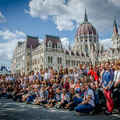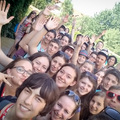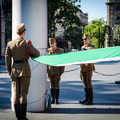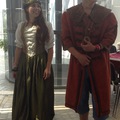Az én nevem Rontó Martin, Délvidékről jöttem, azon belül Közép-Bánátról, Torontáltordáról. A Nagybecskereki Általános Gimnáziumba járok, azon belül elvégeztem az általános zeneiskolát, 8 éve klarinétozok. Nagybecskerekhez közel, Muzslyán az Emmaus kollégium egyik diákja vagyok. Ez egy internát, ahol olyan diákokkal foglalkoznak, akik nem engedhetik meg maguknak azt, hogy a közeli városokban tanuljanak és ezért a kollégium szállást nyújt nekik, hogy tanulmányaikat nyugodtan folytathassák.
Érdeklődési körömhöz tartozik a filozófia és a történelem. Idén sikerült megnyernünk egy filozófiai pályázatot, ennek keretében el tudtunk jutni Németországba és továbbtanulási lehetőséget kaptunk egy intenzív program keretében, annak köszönhetően, hogy az országos első helyet elnyertük. Fő témánk a szabadság és az emancipáció volt.
Mint már feljebb említettem, különösebben érdekel a történelem, ennek kapcsán írtam a pályázatomat a Rákóczi Magyarságismereti Mozgótáborba, aminek a címe: Magyarnak lenni Délvidéken. Egy történelmi témájú adatot dolgoztam fel, amely a Kossuth-szoborral foglalkozott. Ez a Kossuth-szobor 111 éves szobor volt, ami Kossuth Lajos halálának a 10. évfordulójára készült el. Ez egy életnagyságú szobor, amely túlélte az I. Világháborút, a II. Világháborút s a partizánok elől bújtatták hosszú éveken át.
Idén, a köztérről ellopták a szobrot és ezzel arra akartak utalni, hogy nem látják szívesen az ottani magyarokat. Ennek a szobornak nem materiális, hanem inkább szellemi jelentősége volt, hogy az ottani kisebbségben élő magyarokat összetartsa és egy közösséget alakítson belőlük.
Nem szeretem a spekulációt, inkább a tetteket, mert szerintem a szó halott tettek nélkül. Ennek kapcsán írt cikket az egyik ismerősöm, akinek már volt szerencséje részt venni a Rákóczi Magyarságismereti Mozgótáborban a 2014-es évben, valamint neki köszönhetően hallottam erről a táborról és ennek kapcsán dolgoztam fel a történelmi jelentőségű Kossuth-szobor témát.
My name is Martin Ronto. I arrived from the central Banat, more specifically from Torontáltorda [today Torda or Торда] in Serbia. I attend the General Middle School of Nagybecskerek [Zrenjanin or Зрењанин].
My fields of interest are philosophy and history. This year, we were fortunate to win a philosophy grant enabling us to go to Germany and continue our education as part of an intensive program. We received the grant due to the fact that we won first place in the country. The main theme of our program was freedom and emancipation.
As I already mentioned, I have a special interest in history, and so I wrote my application essay to the Students Without Boundaries camp with the topic: Being Hungarian in the Délvidék. I focused on a historical fact pertaining to a statue of Louis Kossuth in Magyarittabe, Serbia (Magyarittabe: Novi Itebej or Нови Итебеј). This statue was 111 years old, dedicated on the 10th anniversary of the death of Kossuth. This is a life-sized statue survived the First World War, the Second World War and was hidden from the partisans for many years.
This year, the statue was stolen from the main square, pointing out that the local Hungarians are not welcome here anymore. The statue has no material value but rather spiritual significance in that it was a symbol of unity for the local Hungarians, who have lived as a minority in this part of central Europe, what was formerly the Austro- Hungarian empire, for many hundreds of years.
I don’t like speculation but action because, in my opinion, words are empty without action. A friend wrote an article on this topic, someone who was fortunate to be a participant in 2014 and it was from this friend that I heard of the camp, that is why I wrote my essay regarding the historically significant Kossuth statue.





